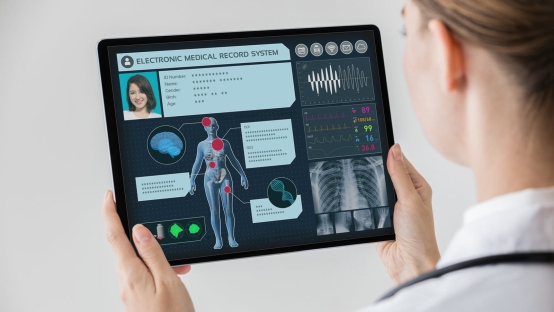Unlocking the Value of Electronic Medical Record Systems
Across the United States, the majority of hospitals now use electronic medical record (EMR) systems, reshaping the way healthcare providers manage patient information. These platforms have become critical tools for improving efficiency, accuracy, and care delivery. This article reviews what EMRs are, their benefits, the barriers to adoption, and where the technology is headed next.
Across the United States, the majority of hospitals now use electronic medical record (EMR) systems, reshaping the way healthcare providers manage patient information. These platforms have become critical tools for improving efficiency, accuracy, and care delivery. This article reviews what EMRs are, their benefits, the barriers to adoption, and where the technology is headed next.

What Exactly Are EMR Systems?
Electronic medical records are digital files that capture a patient’s clinical history within a single practice. They replace paper charts with searchable records that store diagnoses, medications, test results, and treatment notes in one place. EMRs often include features such as automatic alerts for allergies or interactions and reminders for preventive care.
It’s important to distinguish EMRs from other digital health tools. Patient-controlled personal health records focus on individual use, while electronic health records (EHRs) are designed to share data across multiple organizations. EMRs are practice-specific but serve as the foundation for broader digital health ecosystems.
Key Advantages of EMR Adoption
Moving to an electronic system delivers multiple gains for both clinicians and patients. Among the most significant are:
Time savings: Automating documentation and billing tasks frees providers to focus more on patient interaction.
Accuracy: Fewer transcription errors and duplicate records mean safer, more reliable care.
Preventive care: Automated reminders help ensure patients receive vaccinations, screenings, and follow-ups on time.
Collaboration: Secure digital communication allows physicians, nurses, and specialists to coordinate care more effectively.
Research has shown that digital records also improve data analysis, allowing healthcare organizations to track outcomes and identify gaps in treatment.
Challenges in Moving to EMRs
Despite the clear benefits, many organizations face difficulties when transitioning to electronic systems. The initial financial burden of purchasing software, upgrading infrastructure, and training staff can be high. For smaller practices, these costs can be a major barrier.
Resistance to change is another issue. Staff accustomed to paper workflows may struggle with new interfaces, leading to temporary productivity dips. Effective training and phased implementation strategies are essential to smooth the transition.
Finally, data security remains a central concern. EMRs must comply with strict standards such as HIPAA, and providers must invest in cybersecurity to protect against breaches and maintain patient trust.
Regulations and Policy Support
Government initiatives have played a decisive role in driving EMR adoption. The HITECH Act encouraged healthcare providers to adopt EMRs in ways that improved efficiency and quality, while ongoing HIPAA enforcement ensures strict safeguards for privacy and data use. Together, these regulations promote both wider adoption and accountability.
The Next Phase of EMR Development
EMR systems continue to evolve, moving beyond simple recordkeeping toward more advanced healthcare management platforms. Anticipated trends include:
Interoperability: Greater connectivity will enable seamless record sharing among hospitals, clinics, and pharmacies.
AI-driven insights: Machine learning can help predict patient risks, optimize treatment plans, and support decision-making.
Integration with telemedicine: As virtual care grows, EMRs will become central to scheduling, monitoring, and follow-up.
Patient empowerment: Tools such as mobile apps and online portals will give patients greater access to their health data and personalized care plans.
Conclusion
Electronic medical record systems have become essential in modern healthcare, streamlining operations, enhancing accuracy, and enabling stronger collaboration. Although the transition presents challenges—especially regarding cost, training, and cybersecurity—the long-term value is undeniable. With regulatory support and rapid technological advances, EMRs are set to play an even greater role in delivering connected, efficient, and patient-centered care.

